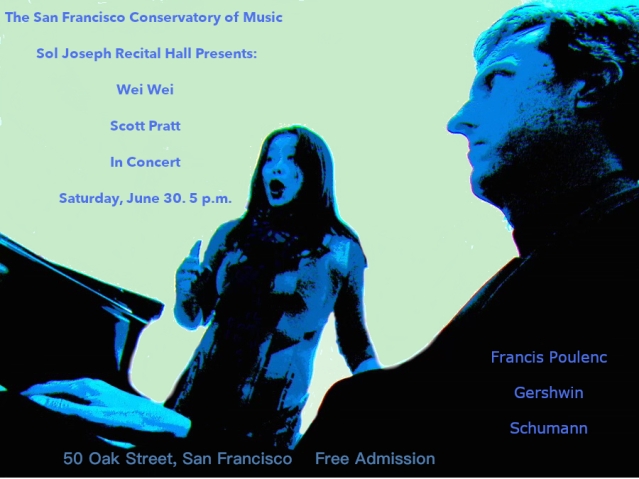By Thomas K. Pendergast
The City’s plan is moving forward to replace the Great Highway south of Sloat Boulevard with a walking path and seawall to deal with erosion threatening a wastewater treatment plant and sewage pipeline at Ocean Beach.
Although the Ocean Beach Climate Adaptation Plan has fans among a certain advocacy group, it also has a critic.
Last month the San Francisco Board of Supervisors passed an ordinance amending the park code to close the Great Highway Extension down to Skyline Boulevard for motor vehicles, which runs past the Oceanside Water Pollution control plant, then replace it with a “multi-use trail.” The plan would also reconfigure the intersection of Sloat Boulevard and the Great Highway, as well as the entrance to the San Francisco Zoo.
The highway’s existing northbound travel lane would be converted to a service road, or the service road could be constructed east of the current road alignment to allow for more open space.
The remaining bluff face would be reshaped into a sloping hill, capped by and small plaza-like open space area adjacent to the zoo for walking and sitting extending out from the service road and multi-use trail.

On its website, the San Francisco Bicycle Coalition praises the new plan:
“The Ocean Beach Climate Change Adaptation Project will be incredibly transformative for people walking, biking and rolling across the City and region. Currently, accessing this part of the City by bike can be difficult and safety improvements are necessary. Once completed, this project will draw more bicycle, foot and bus traffic to the southwest corner of the City.”
But down closer to the beach and under the eroding cliffs, it is the construction of a “buried sea wall” – a below-grade wall adjacent to and west of the Lake Merced Tunnel, which is a 14-foot-diameter pipeline bringing sewage water from the residences of the Lake Merced area to the plant, where it gets treated then released through another pipe going into the ocean at about four miles out to sea. That concerns at least one member of another advocacy group.
Bill McLaughlin, a member of the Surfrider Foundation, an advocacy group for surfers, said the seawall is not quite what its proponents claim, regardless of whether or not it is described as a “buried” seawall.
In a letter to the Sunset Beacon newspaper, the former Ocean Beach Master Plan (OBMP) stakeholder representative says that while the OBMP was “a balanced plan of infrastructure protection in exchange for beach restoration, safe beach access, robust visitor parking and other recreational amenities, the current proposal needs serious revision.”
McLaughlin goes on to state “the OBMP envisioned a compromised project which included a low profile, buried seawall to protect infrastructure. Beach and dune restoration would have occurred on both sides of the buried seawall, with wave run-up allowed to wash over the structure. It was a living shoreline design which was geared toward minimizing the need for sand replenishment projects.
“The climate adaption project is a conventional seawall, twice the size of the original OBMP design. It has a sloped crown which is be covered in sand, mimicking a sand dune. Most importantly the new seawall is meant to block the shoreline as it erodes.
“It is not a living, ecologically functional shoreline as found in the OBMP plan. Waves and sand are not welcome to wash over this structure. A concrete walking and bicycle path sits atop the seawall.
“If approved and built, sea level rise and climate-change-driven storm activity will most definitely test this wall. Without massive and regular sand replenishment, it is easy to imagine a complete drowning of the beach.”
Indeed, in 2017 the San Francisco Public Utilities Commission (SFPUC) said it was not proposing to create a seawall to save that section of the highway, instead it would adopt a policy of “strategic retreat” in an effort to save what is left of the beach. The consensus among city planners was that building a giant sea wall to save the highway would mean losing the beach because it would eventually erode away.
They did, however, propose building a smaller seawall beneath the sand to protect the sewage tunnel and treatment plant.
Nancy Hayden Crowley, the press secretary for the SFPUC, responded to McLaughlin’s letter by stating that after the OBMP’s initial recommendations, the commission undertook an additional technical analysis, which she said the initial recommendations called for in its preamble.
“The technical specialists proposed a seawall design that will create a wider beach more resilient to erosion as well as a plan to monitor and replenish beach sand over time as needed. The project will provide a wider, more usable beach through removal of existing rock and rubble, seawall installation about 60-80 feet landward of the revetment toe (where rocks meet the beach at the bottom) and monitoring and replacing of sand as needed (sand nourishment).
“The Ocean Beach Climate Change Adaptation Project remains faithful to the concept of managed retreat through dune plantings, moving the seawall back 60-80 feet to protect the Lake Merced Tunnel … and sand nourishment.”
Categories: ocean beach














It’s ridiculous that after years of hard work, including input from many experts and area users, the Master plan is being ignored. Of course the bike coalition is now at the forefront of dictating policy.
People should be outraged with this reactionary, zero vision policy pandering to the orgs as the real hard work and vision is flushed down the proverbial drain.
LikeLike
As the great highway operates now Monday thru Friday traffic has no impact on outer sunset homes, the zoo or small business . It’ pretty much guaranteed that when SFMTA reroutes traffic from the Great highway to Sloat Blvd and reconfigures Sloat that we’ll have a new traffic mess with traffic backups and a loss of parking. The result we be harmful to the Zoo and small business. More drivers will go down residential streets to avoid the area.
Surfrider foundation is saying the plan is flawed. The zoo moved there parking entrance to the west side because it was a safe entry and kept customers from having to cross Sloat. Once again the majority Of residents in San Francisco are having a bad change forced on them by minority organizations.
LikeLike
Beach erosion occurs all up and down the California coast, and it’s not caused by “climate change”. If the real estate is valuable, sand can be replenished and seawalls built to stabilize the cliffs. The loss of this part of the Great Highway is a political decision, designed to benefit the tiny minority of “bike bro’s” who control Public Works these days.
LikeLike